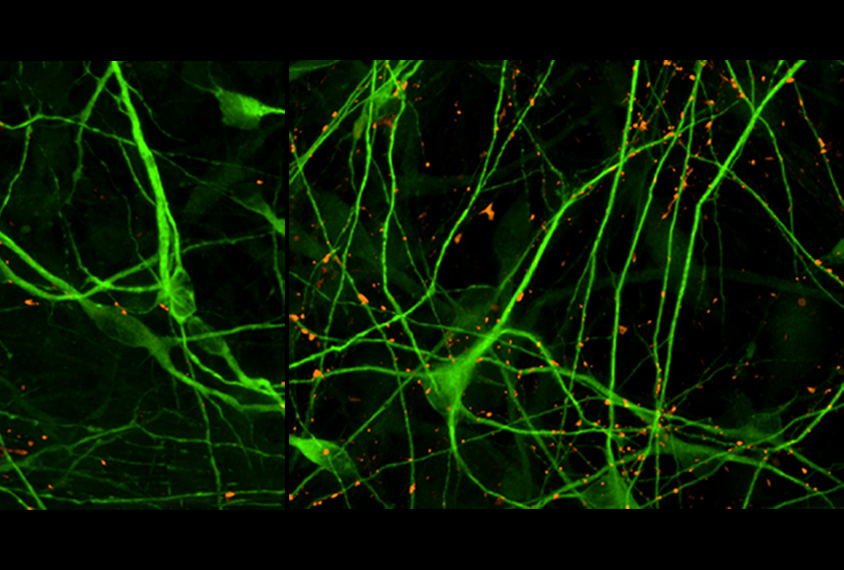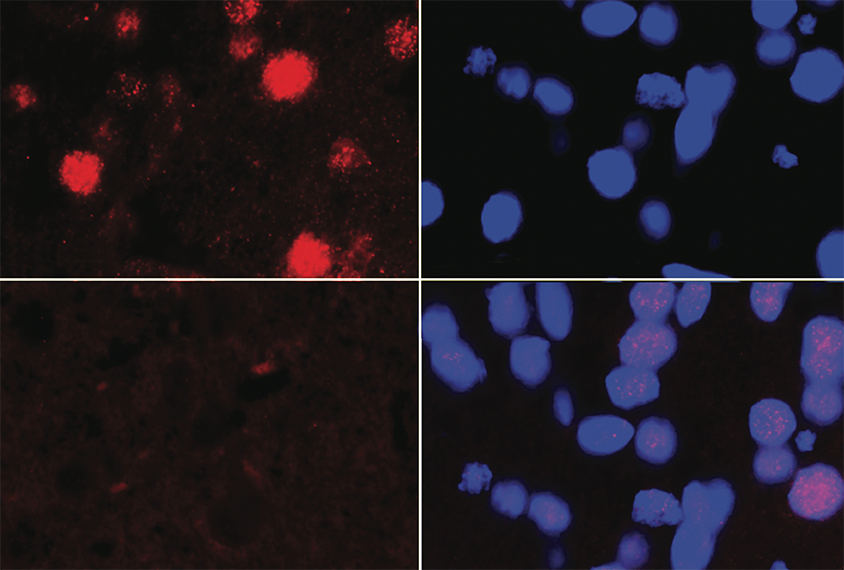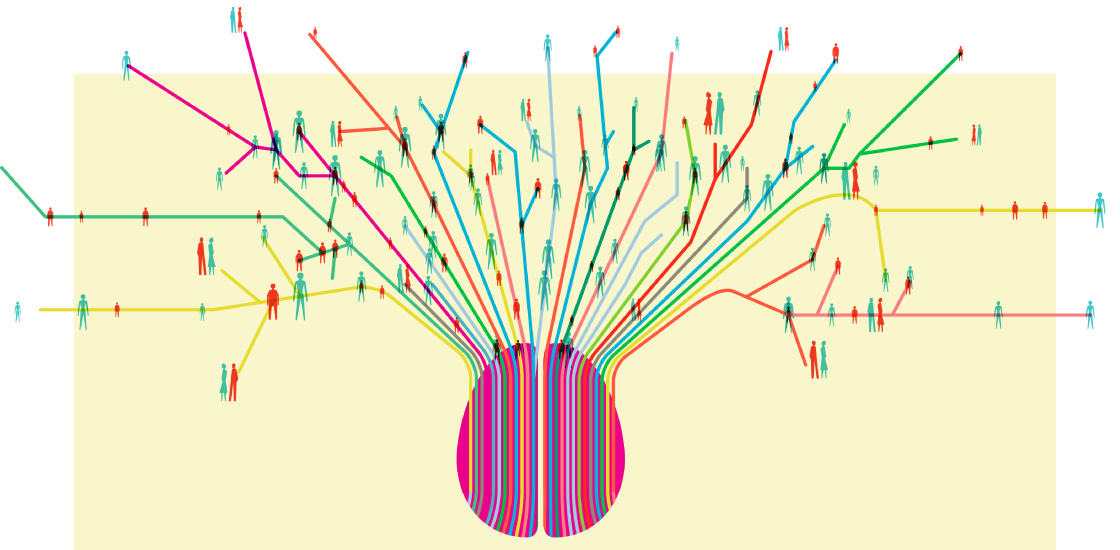22q13
Recent articles
Organoids identify potential therapies, circuit flaws for autism-linked syndromes
Brain cell clusters serve as drug screens and reveal connectivity differences for autism-linked conditions, two new models show.

Organoids identify potential therapies, circuit flaws for autism-linked syndromes
Brain cell clusters serve as drug screens and reveal connectivity differences for autism-linked conditions, two new models show.
Autism-linked mutation disrupts brain circuit to change social behavior
Therapies that target the circuit could boost social activity, new findings suggest.
Autism-linked mutation disrupts brain circuit to change social behavior
Therapies that target the circuit could boost social activity, new findings suggest.
DNA tags in placenta point to possible autism-linked gene
The gene, dubbed NHIP, is in a chromosomal region that shows unusually low levels of DNA methylation in placentas from women who gave birth to autistic children.

DNA tags in placenta point to possible autism-linked gene
The gene, dubbed NHIP, is in a chromosomal region that shows unusually low levels of DNA methylation in placentas from women who gave birth to autistic children.
New family group pursues treatments for autism-linked syndrome
After a decade of working with the Phelan-McDermid Syndrome Foundation, Geraldine Bliss has co-founded a new organization to develop therapies for the condition.

New family group pursues treatments for autism-linked syndrome
After a decade of working with the Phelan-McDermid Syndrome Foundation, Geraldine Bliss has co-founded a new organization to develop therapies for the condition.
Mutations in autism gene may trigger milder effects than does its loss
People with mutations in SHANK3 have milder features than do those missing a chunk of DNA that includes the gene.

Mutations in autism gene may trigger milder effects than does its loss
People with mutations in SHANK3 have milder features than do those missing a chunk of DNA that includes the gene.
Wi-Fi flap; obsessive-compulsive link; brain catalog and more
Two researchers balk at talk that Wi-Fi and autism are linked, changes in an autism risk gene are tied to obsessive-compulsive traits in three species, and scientists plan to conduct a census of all of the brain’s cell types.
Wi-Fi flap; obsessive-compulsive link; brain catalog and more
Two researchers balk at talk that Wi-Fi and autism are linked, changes in an autism risk gene are tied to obsessive-compulsive traits in three species, and scientists plan to conduct a census of all of the brain’s cell types.
Family groups play key role in advancing autism research
Families need more support from researchers in order for their heroic efforts to be optimally effective.

Family groups play key role in advancing autism research
Families need more support from researchers in order for their heroic efforts to be optimally effective.
Rare form of autism shows unique pattern of regression
More than 40 percent of children with Phelan-McDermid syndrome lose skills they once had, beginning, on average, at age 6.

Rare form of autism shows unique pattern of regression
More than 40 percent of children with Phelan-McDermid syndrome lose skills they once had, beginning, on average, at age 6.
New role for autism gene extends treatment possibilities
The autism-linked gene SHANK3 is known for its role at neuronal junctions, but it has another function that could serve as a drug target.

New role for autism gene extends treatment possibilities
The autism-linked gene SHANK3 is known for its role at neuronal junctions, but it has another function that could serve as a drug target.
Clinical research: Autism-related syndrome changes with age
Many characteristics of Phelan-McDermid syndrome — an autism-linked disorder arising from abnormalities at the tip of chromosome 22q13 — change as individuals age.

Clinical research: Autism-related syndrome changes with age
Many characteristics of Phelan-McDermid syndrome — an autism-linked disorder arising from abnormalities at the tip of chromosome 22q13 — change as individuals age.
Explore more from The Transmitter
Five things to know if your federal grant is terminated
If you want to appeal the decision, know the rules that govern terminations, as well as the specific rationale given in your notice, science policy experts say.

Five things to know if your federal grant is terminated
If you want to appeal the decision, know the rules that govern terminations, as well as the specific rationale given in your notice, science policy experts say.
It’s time to examine neural coding from the message’s point of view
In studying the brain, we almost always take the neuron’s perspective. But we can gain new insights by reorienting our frame of reference to that of the messages flowing over brain networks.
It’s time to examine neural coding from the message’s point of view
In studying the brain, we almost always take the neuron’s perspective. But we can gain new insights by reorienting our frame of reference to that of the messages flowing over brain networks.
Autism traits, mental health conditions interact in sex-dependent ways in early development
Here is a roundup of autism-related news and research spotted around the web for the week of 31 March.

Autism traits, mental health conditions interact in sex-dependent ways in early development
Here is a roundup of autism-related news and research spotted around the web for the week of 31 March.